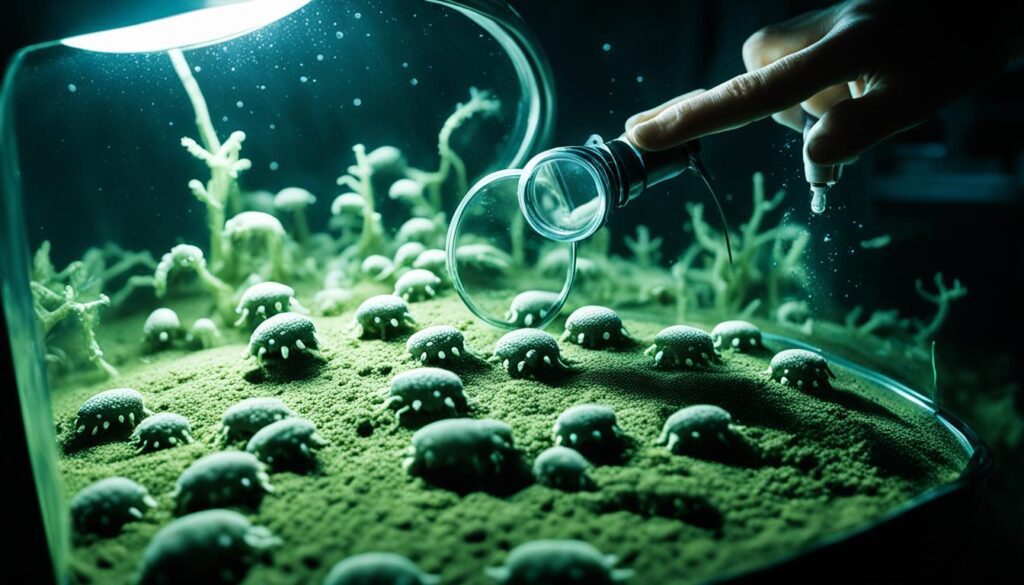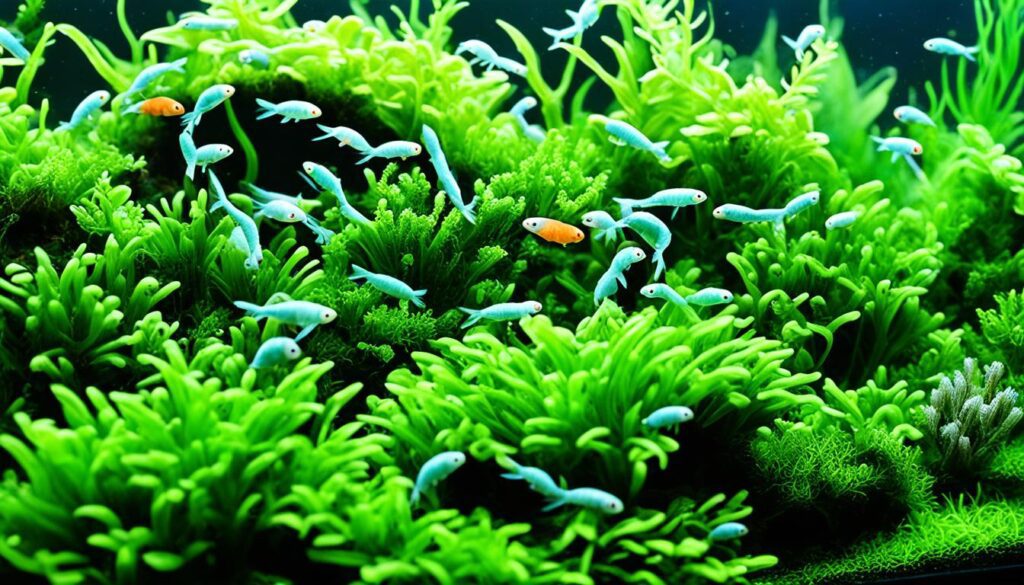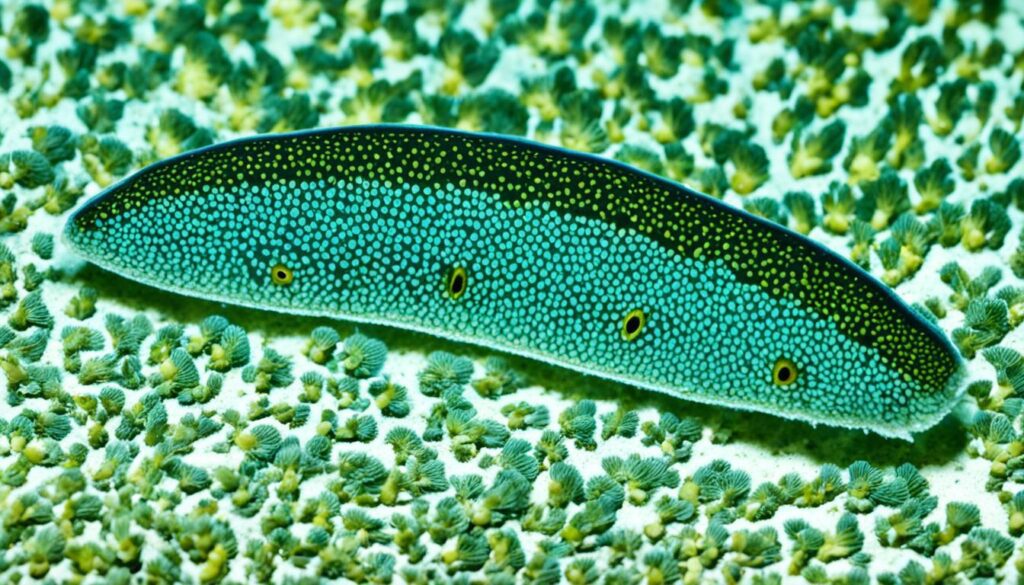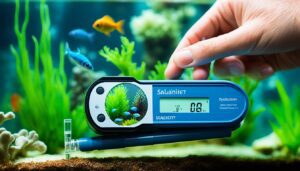As an aquarium enthusiast, I ran into a pretty annoying problem: planaria invaded my tank. These weird little flatworms showed up after I added some new plants, which was a tough reminder of why it’s so important to quarantine any new additions before putting them in the main tank. During my research, I learned that red planaria often sneak in on live rock or corals, and they can quickly multiply and start causing damage to your corals.
I stumbled upon a product called “Flatworm eXit” by Salifert. It’s known for being reef-safe and pretty effective against planaria. A good preventative measure is to dip new tank additions in Flatworm eXit to stop infestations before they even start. Also, if you have a planaria problem, it’s smart to siphon out as many of the flatworms as you can before treating the tank; it really helps keep the tank’s ecosystem safe.
Some fish, like Six Line Wrasses and Leopard Wrasses, are natural planaria predators. Adding these fish to my tank not only helped with the flatworms but also turned a nuisance into a cool opportunity to add more life to the tank. It just goes to show that even the most unexpected issues can lead to some positive changes in your aquarium.
Handling these kinds of surprises has taught me a lot about tank care and keeping things in balance. Managing nutrients, getting rid of waste the right way, and using treatments carefully are all key to preventing planaria from becoming a bigger problem.
An Unsettling Discovery: Identifying Planaria in Your Tank

When I first noticed tiny, white, squiggling threads in my aquarium, I was both baffled and concerned. These hair-like organisms, initially mistaken for harmless dust, are planaria. They are a type of aquarium pests no tank owner wants. Identifying planaria means spotting their distinct wriggling and knowing the risk they bring to our water worlds.
Flatworms detection in home aquariums usually begins with seeing them. Planaria, being 0.1 to 0.6 inches long, can be white or brown. They often glide across the tank’s glass or bottom. The white ones, being predators, are a big threat to shrimp and tiny tank mates.
Handling a planaria outbreak is more than just a tank maintenance issue. It means deep cleaning and maybe using chemicals to fully get rid of them. From what I’ve seen, acting fast is key. They reproduce by themselves, making them tough to beat once they’re in.
- Regular water changes and cleaning the bottom can help keep them away.
- Panacur C, a dewormer for dogs, works against planaria with 0.1 gram for every 10 gallons of water.
In fighting these pests, knowing how to spot and identify planaria is essential. It helps keep our underwater friends safe and healthy from these dangerous invaders.
Sources of Planarian Infestation: From Hitchhikers to Overfeeding

When managing an aquarium, different factors can make planaria appear. Knowing these reasons can help stop and control these unwelcome guests.
Introduction of New Plants and Decor
Infected aquarium plants can bring planaria into your tank. Even if you try hard, like using anti-parasitic soaks, these tough pests like snails or planaria can sneak in. They don’t just lead to a snail die-off; they also start planarian breeding. In my testing, soaking plants in alum was best at stopping snail eggs and planaria.
Overfeeding and Waste Accumulation
Overfeeding leads to too much waste, raising tank nutrient levels. This makes a perfect spot for planaria to grow. A friend, who is very careful with feeding, still had a big outbreak. This shows that even a little too much food can cause big problems.
Cross-Contamination Between Tanks
Tank cross-contamination is a big worry. If you don’t clean equipment like nets or siphons, or if you transfer planaria while filter media seeding, you’ll spread them. From what I’ve seen, keeping and cleaning any shared tools alone helps avoid this issue.
- Always check water quality to spot any changes that might help planaria multiply.
- Keep new tank additions in quarantine. Treat plants and new fish to make sure they’re pest-free.
Method |
Planaria Control |
Impact on Plants |
|---|---|---|
Bleach Dip |
Effective |
Harmful to sensitive species |
Alum Dip |
Highly Effective |
Gentle on most plants |
Copper Treatment |
Less Effective |
Varies by dosage and plant type |
To stop further problems, it’s crucial to fix not just the symptoms but the root causes of planarian infestation.
Understanding Planaria: The Biology and Behavior of Aquarium Flatworms

I’ve always been drawn to aquarium ecosystems and their hidden inhabitants. One such inhabitant, the planarian, stands out due to its flat body and unique behavior. These creatures are fascinating to watch but it’s important to know how to manage them.
Planarians are found in various environments like rivers and seas. They have a special digestive system with one opening and a three-branched intestine. This system helps them digest food effectively.
Planarians move by gliding over surfaces with tiny hairs on their bellies. They leave behind a trail of mucus. To learn more about how they grow back body parts, you can read about planarian regenerative abilities.
As environmental indicators, Triclads show us the health of their surroundings. They breathe through their skin since they don’t have a regular blood system. Their body also has an efficient system of tubes for getting rid of waste.
These creatures have interesting brains and can have many eyes, helping them sense their environment. Some can have over 20 eyes! They also have stem cells all over their bodies, allowing them to heal remarkably.
Planarians can be both good and bad for aquariums. They reproduce quickly, which can lead to overpopulation. If too many die at once, they could release toxins, harming the tank’s balance.
Characteristic |
Description |
|---|---|
Size |
Ranges from 3 mm to 30 cm depending on the species. |
Regeneration Rate |
Can regenerate major tissues within 7-10 days in conducive lab settings. |
Reproduction |
Sexual and asexual, with significant variability across species. |
Biological Role |
Act as significant bio-indicators for ecological studies. |
By understanding planarians better, we can better manage these intriguing yet sometimes problematic creatures in our tanks.
What Causes Planaria: Pinpointing the Culprits Behind Sudden Infestations
Seeing planaria in your tank is disheartening for any aquarium lover. They often show up unexpectedly. Keeping your tank clean is crucial to avoid these guests. Tanks that aren’t cleaned regularly may have too many nutrients. This can invite planaria. Leftover food and decaying materials add to the problem, creating a perfect home for planaria.
Quarantining new tank additions is also key. New plants or fish may bring planaria into your tank. It’s important to carefully introduce new items to your aquatic world. This keeps infestations away. I once went to a Symposium on Biotic Invasions. Experts there said even beautiful new things could bring pests. This shows how vital prevention is.
Excessive Nutrients: A Breeding Ground for Planaria
Planaria often show up in tanks that are overfed and crowded. This messes with water chemistry and conditions. For example, unexpected changes in temperature or pH can bring planaria. Keeping an eye on your aquarium’s health is essential.
Inadequately Quarantined Additions to the Tank
Like the seminars I visited at the 95th Annual Meeting teach, every new tank addition needs careful consideration. This is similar to introducing new tech or studies in a lab. Proper quarantine can mean the difference between a healthy tank and a planaria problem.
Impact of Chemical Treatments on Planaria Populations
In battling planaria, I’ve used chemicals aimed at other pests too. Yet, some treatments can upset your tank’s balance. For example, an anti-snail product might initially help but also boost planaria numbers. So, we must use treatments carefully. Choosing and using the right chemicals is critical for your tank’s health.








